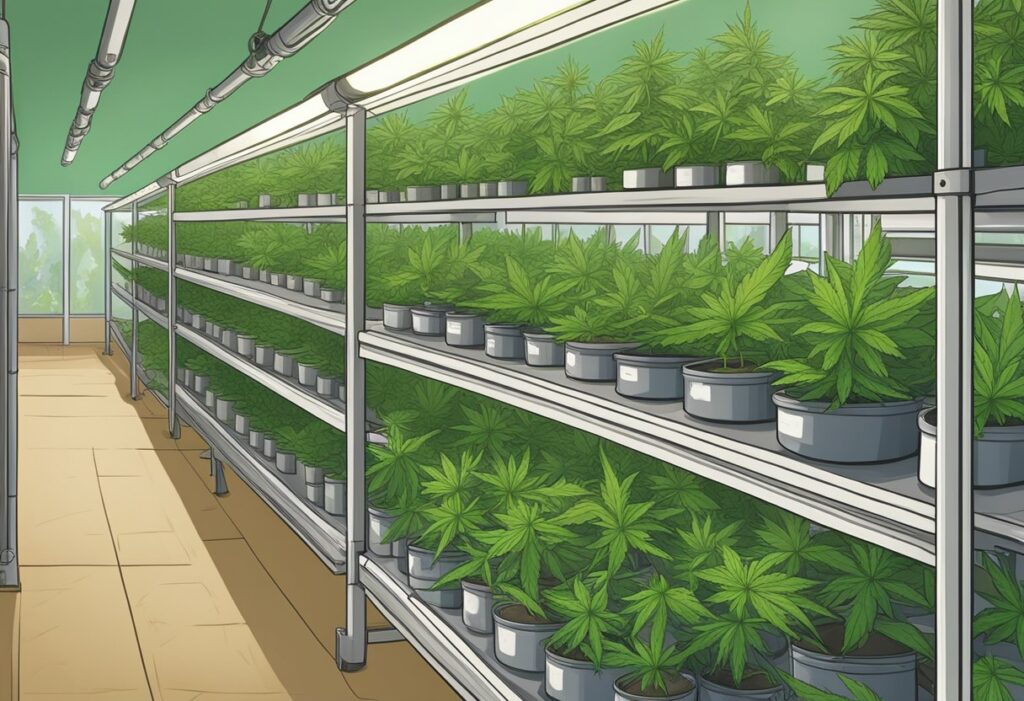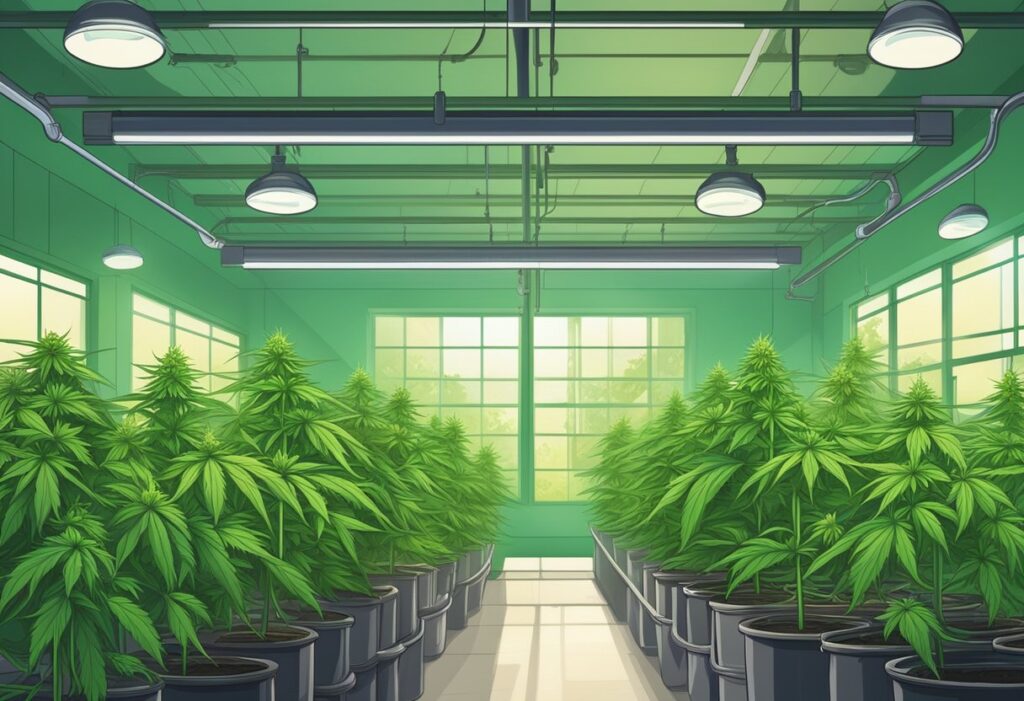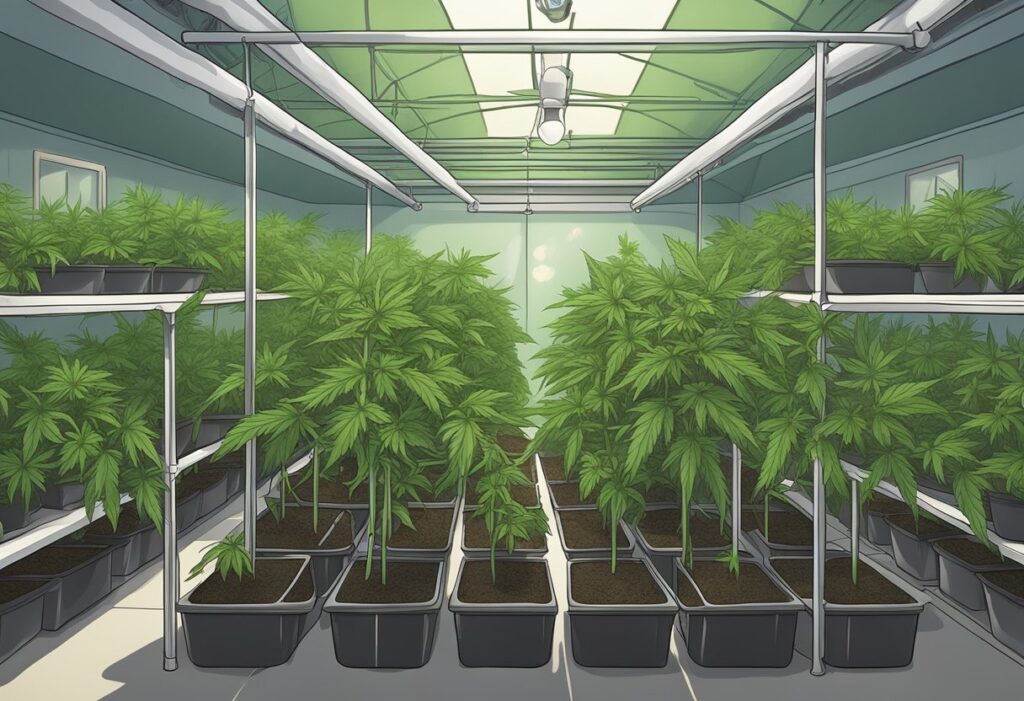
Embarking on a journey to grow cannabis effectively in Canada, you must grasp the essential principles of cultivation. An understanding of the soil requirements, selecting the right strains, and creating an optimal growing environment are foundational to thriving cannabis plants.
The soil you select for your cannabis plants acts as the primary source of nutrients and should be rich in organic matter. Ensure the pH levels are between 6.0 and 7.0 as this is the sweet spot for cannabis to absorb nutrients efficiently.
To maintain optimal pH, use a reliable pH meter to test your grow medium routinely.
Your choice of marijuana seeds should reflect the genetics suitable for the Canadian climate and your specific growing situation. Whether you aim for a high THC content or a specific flower aroma, starting with quality marijuana seeds Canada will greatly influence the growth and potency of your plants.
Consider local legal regulations when acquiring seeds or cuttings.
Your cannabis plants require a well-controlled environment to move smoothly through the vegetative and flowering stages. Keep indoor temperatures between 70-85°F and humidity levels between 40-60% to prevent issues like mold and stress.
By monitoring these factors, you create conditions that allow for robust cannabis growth and development.

Successfully cultivating cannabis in Canada demands attention to irrigation and nutrition, two pivotal components for plant health and potency.
Your cannabis plants thrive with a balance of moisture and oxygen. Overwatering is detrimental as it can drown the roots, hampering oxygen uptake and causing root rot. Conversely, underwatering stresses plants, slowing growth. Use a soil-water meter to measure moisture levels accurately, ensuring you’re neither over nor underwatering. Your goal is a moist, but not saturated, soil environment that allows roots to breathe. Employ pots with sufficient drainage holes to avoid water accumulation at the bottom.
Your plants require a diverse range of nutrients to prosper, including nitrogen, phosphorus, and potassium, each playing a crucial role in plant development. However, overfeeding can lead to nutrient burn, manifesting as discolored, crispy leaf tips. A balanced feeding schedule is key, with gradual increases in nutrient solution strength as your plants grow. Begin with a quarter strength and observe plant response before progressing.
Deficiencies disrupt plant health and can compromise your cannabis’s potency. Potassium deficiency, for example, often shows as yellowing or browning leaf edges. Watch out for early signs and apply a nutrient solution tailored to address the specific shortfall. Accurate diagnosis is crucial; consult a deficiency chart as a guide.
By adhering to proper watering and nutrient management, you ensure the development of robust cannabis plants with optimal health and vitality.

Efficiently managing your cannabis cultivation can prevent many common issues that affect yield and quality. By focusing on pest and disease prevention, precise climate control, and proper harvesting techniques, you can ensure a healthy crop.
Your cannabis plants are vulnerable to various pests and diseases which can drastically affect your crop. Implement the following measures to maintain a healthy grow space:
Proper lighting and climate are pivotal for successful cannabis growth:
Below is a table for quick reference:
| Factor | Ideal Range |
|---|---|
| Humidity | 40-60% |
| Temperature (Day) | 20-25°C |
| Temperature (Night) | 17-20°C |
| Light Distance | Varies with light type (check manufacturer’s recommendations) |
| Air Movement | Consistent airflow with no dead spots |
Mindful pruning and timely harvesting are crucial:
Remember, overwatering and overfeeding are some of the most pervasive cannabis growing mistakes, so monitor your watering schedule and nutrient levels closely to prevent root rot and nutrient burn. With careful attention and consistent practices, you can circumvent many common cultivation issues.
Maintaining an optimal growing environment is crucial for indoor cannabis cultivation. Overlooked factors such as inadequate ventilation, improper temperature, and humidity levels often lead to suboptimal growth or plant stress. Ensure your grow space is well-ventilated, with temperatures kept between 20-30°C and relative humidity between 40-70%, adjusted according to your plant’s life stage.
To prevent nutrient issues, it’s vital to start with a well-balanced soil mix and follow a feeding schedule suited to the specific growth stage of your cannabis plants. Overfeeding can cause nutrient burn, while underfeeding may lead to deficiencies. Invest in a quality nutrient line, use it as directed, and monitor your plants for signs of distress that could indicate over or underfeeding.
Start with preventative measures such as maintaining a clean grow space and employing proper quarantine procedures for new plants. Natural predators and neem oil can help manage pests, whereas ensuring good air circulation and keeping the foliage dry are effective ways to minimize the risk of fungal diseases.
Cannabis requires bright, yet not scorching, light to thrive. Depending on the growth stage, your plants need between 18-24 hours of light during the vegetative phase and a 12/12 hour light/dark cycle during flowering. Utilize appropriate grow lights like LEDs or HIDs and maintain a proper distance from your plants to avoid light burn while ensuring adequate coverage.
Overwatering is a common mistake; it can drown roots and inhibit oxygen absorption. Allow the top inch of soil to dry out before watering again. Typically, mature plants require water every 2-3 days. However, this can vary based on factors like pot size, room humidity, and plant size.
We ship and deliver world wide via USPS and various couriers.
We offer a wide range of secure and anonymous online payment options.
We care about you, our customer. Please contact us with any questions or concerns.
Find out more about the benefits of being a loyal and regular customer.
WE ARE EVERY GROWERS ONE STOP SHOP TO ACQUIRE PREMIUM CANNABIS SEEDS FOR SALE IN THE USA, CANADA AND AUSTRALIA

Farmers Lab Seeds 2024, | All Right Reserved
Seeds are sold as novelty items, souvenirs, and collectibles. They contain 0% THC. We encourage our customers to check the legislation in their Country, State, Province, and Municipality prior to purchasing items from our store. We do not provide growing information.
All seeds are sold as hemp, and lab tested under 0.3% THC. This product is not for use by or sale to persons under the age of 21. This product should be used only as directed on the label. It should not be used if you are pregnant or nursing. Consult with a physician before use if you have a serious medical condition or use prescription medications. A Doctor’s advice should be sought before using this and any supplemental dietary product. All trademarks and copyrights are property of their respective owners and are not affiliated with nor do they endorse this product.
These statements have not been evaluated by the FDA. This product is not intended to diagnose, treat, cure or prevent any disease. Individual weight loss results will vary. By using this site, you agree to follow the Privacy Policy and all Terms & Conditions printed on this site. Void Where Prohibited by Law.